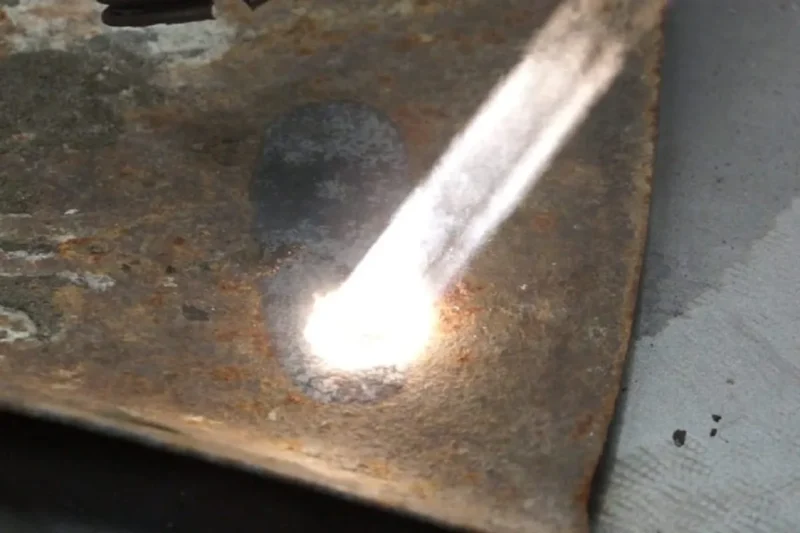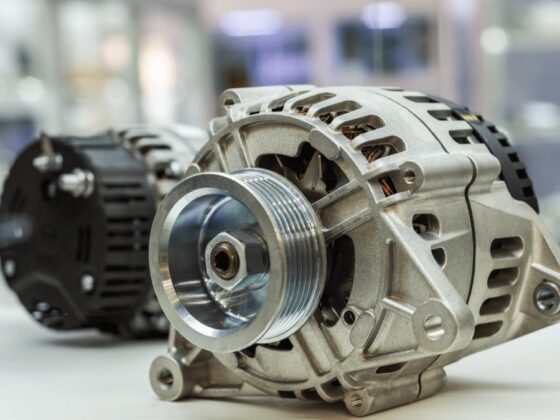Rust is an unwelcome sight on metal surfaces, but it can be difficult to remove. Fortunately, laser technology has revolutionized rust removal and made the process much easier.
Laser rust removers use a combination of advanced optics and powerful lasers to break down rust molecules and bring back the original shine of metal surfaces. In this article, we will investigate how laser rust removers work their magic to determine when they are best used for removing tough rust stains.
We also explore how this technology can be applied in various industries such as automotive repair, industrial manufacturing, or even around the home. By understanding the underlying mechanism behind laser rust removal we can gain insight into its uses and limitations so that everyone from DIYers to professional technicians can make informed decisions about which approach works best for them.
Introduction to Laser Rust Removers
Laser rust removers are an efficient and effective way of removing rust from a variety of surfaces. They utilize a laser beam to quickly break down the chemical bonds that hold the rust particles together, allowing them to be easily wiped away.
This method is particularly useful for hard-to-reach places or areas with intricate detail, as it can precisely target areas without damaging surrounding material. Plus, it’s usually faster than manual methods like sanding or scraping. In short, laser rust removal is an excellent solution when dealing with rusty surfaces!
Examining How a Laser Rust Remover Works

Rust can be a major problem for many metal objects and surfaces. Lasers are now being used to help remove rust, offering an effective and efficient way to get rid of this corrosion.
Examining how a laser rust remover works is essential in understanding its full capability. At the core, laser rust removal involves using high-powered lasers to heat the surface that contains the rust.
The application of intense energy causes oxidation on the rusted area which breaks down any existing bonds between molecules or particles at that specific location. This process needs to be repeated multiple times until all traces of rust have been completely removed from the surface.
The advantage of using laser technology for this purpose is that it can target small areas without damaging other parts of the object; making it much more precise than other methods such as sandblasting or chemical treatments. In addition, because there is no physical contact between tools and objects during treatment, there is almost zero chance for further damage due to abrasion caused by friction or vibration from traditional cleaning methods.
As a result, laser rust removal has become increasingly popular with people looking for fast yet safe ways to clean metal objects from corrosive materials like iron oxide (rust). Overall, examining how a laser rust remover works helps us understand why it has become such an important tool in restoring various metallic objects to their original condition while preserving their integrity throughout the whole process
Safety Measures When Using a Laser Rust Remover
When using a laser rust remover, safety should be the highest priority. To ensure the safe operation of the equipment, it is essential to practice basic safety protocols and follow all instructions for proper use.
Eye protection is necessary when operating a laser rust remover as reflected light from the beam can cause permanent damage to eyesight. Protective clothing should also be worn and long hair tied back while in use due to potential hazards like fire or sparks that may occur from contact with metal surfaces being treated.
Additionally, an appropriate area must be selected for use with adequate ventilation and away from flammable materials. When finished, unplugging the device will help protect against electric shock hazards and ensure no one is exposed to any radiation emitted by the system during storage or transport.
Finally, never leave unattended children near a laser rust remover as they could potentially injure themselves or damage the device if not supervised properly.
Conclusion

Rust removal can be a difficult and tedious task, but laser rust removers have made it much easier. Laser rust removers use focused beams of light to remove rust from surfaces without damaging the surrounding material, providing an easy and effective solution for removing rust quickly and efficiently.
The mechanism behind laser rust removers works by breaking down the chemical bonds that make up the surface of rusty metals to effectively clean off the oxidation layer without causing any damage or leaving residue behind. With this technology in place, anyone can easily remove even the toughest layers of rust with minimal effort and time spent on manual labor.
In conclusion, laser rust remover technology provides a simple way to rid surfaces of stubborn oxidation layers while preserving their original structure – making it an invaluable tool for those looking to maintain their properties and appearance without putting too much effort into it.


